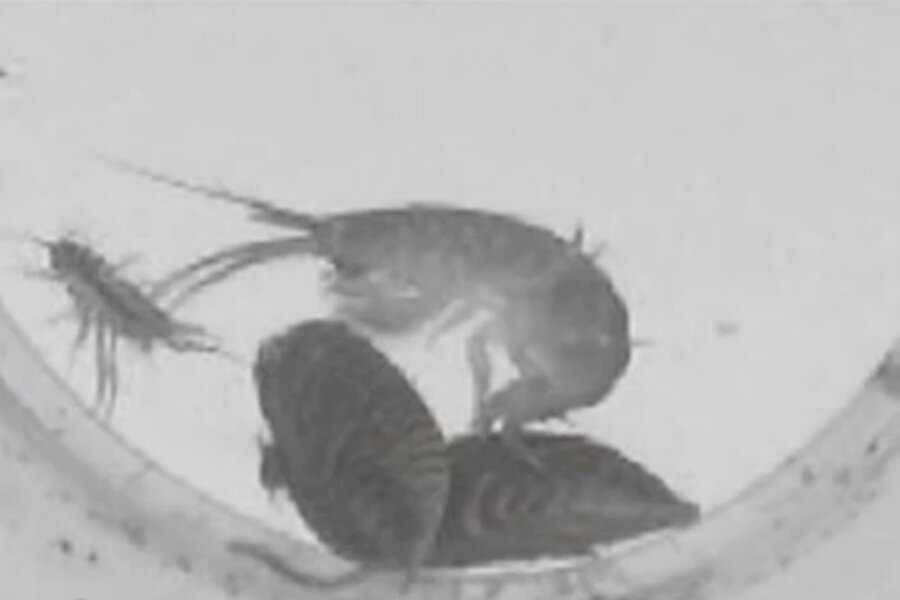Killer shrimp assault British shrimp, threaten ecosystem
Loading...
| Boston
On Sept. 9, Britain's Environment Agency issued an alert that "killer shrimp" were spotted in a fresh-water reservoir in Cambridgeshire, England.
Before you have a 28 Days Later moment, take a deep breath.
These tiny crustaceans, the Dikerogammarus villosus shrimp, which can grow up to 3 centimeters (about 1 inch) in length, pose no direct danger to humans.
But the killer shrimp is bigger than local species – and more aggressive.
IN PICTURES: The 20 weirdest fish in the ocean
The "killer shrimp" eats other shrimp and small fish that are common across the UK. Like the Asian carp in Lake Michigan, the species is not native to this part of the world and may cause problems for the UK's water ecosystems.
"It tends to aggressively pursue its prey, often leaving it dead but uneaten. It is known to have caused the extinction of several other species in other areas," the Epoch Times reported.
Not only is it bully, it has few predators in this new habitat.
The "killer shrimp" has three spikes on its back, making it inedible for small fish who choke on the prawn when they try to swallow it.
The shrimp is normally found in the region between the Caspian Sea and the Black Sea. The "killer shrimp" was likely spread to Western Europe via the Danube River on boats, by fishermen, or by birds.
"We are devastated that this shrimp has been found in Britain,” Dr. Paul Leinster, head of UK’s Environment Agency, told BBC.
Scientists are now testing the water to see how widespread the "killer shrimp" problem may be and have put up posters warning boaters to check their equipment and vessels in an effort to stop the potential spread of the species into other British waters.
"We need to do everything we can to protect our native wildlife and young fish from the potential damage the killer shrimp can cause," Richard Benyon, a minister from the Environment Agency, said.





